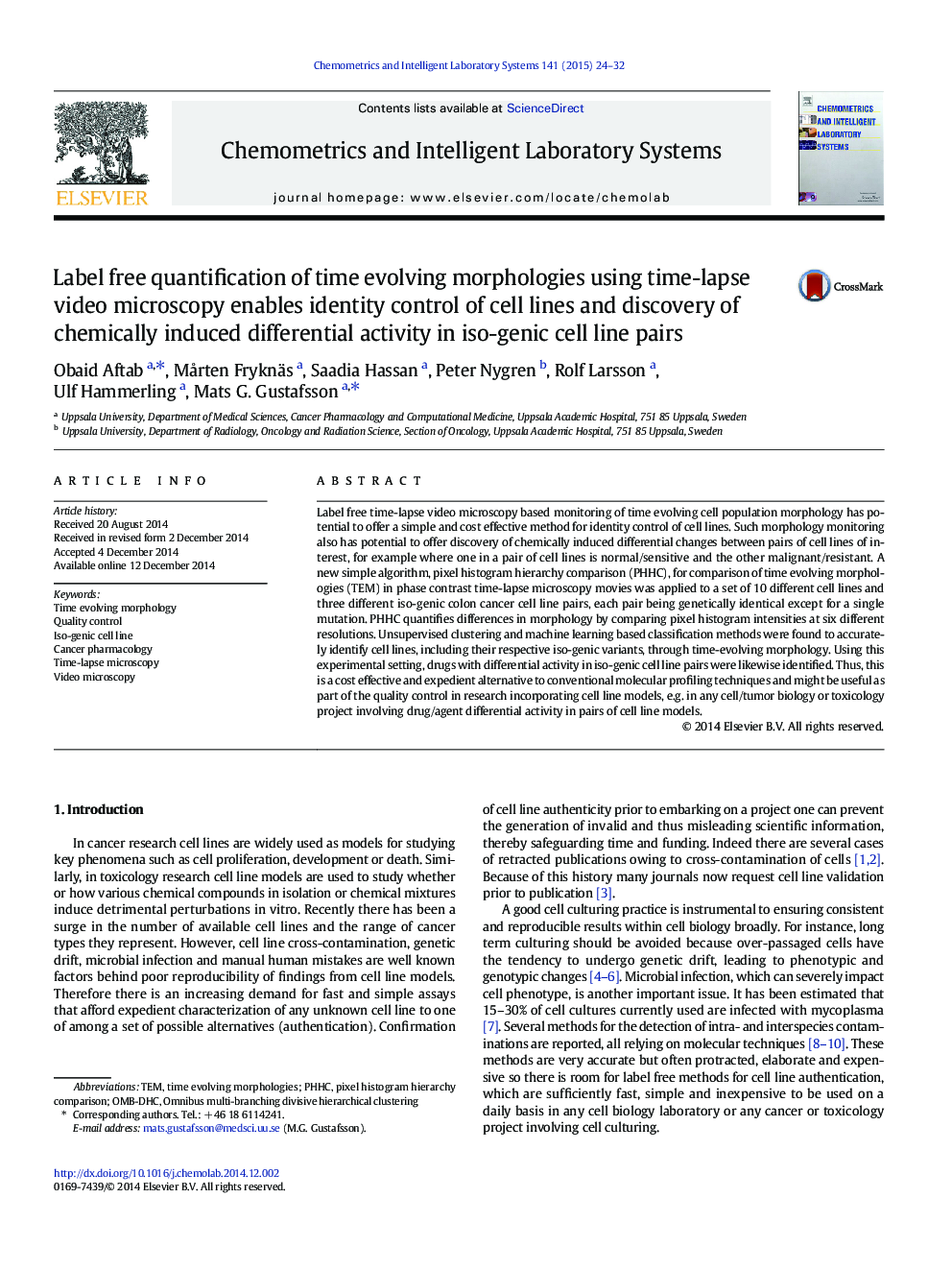| Article ID | Journal | Published Year | Pages | File Type |
|---|---|---|---|---|
| 1179379 | Chemometrics and Intelligent Laboratory Systems | 2015 | 9 Pages |
•Cell populations monitored via label free time-lapse video microcopy are considered.•A simple algorithm is introduced for analysis of the time-lapse videos collected.•The algorithm is fast and does not rely on identification of individual cells.•Successful identity control of uncharacterized cell lines is presented.•Successful discovery of chemically induced differential activities is presented.
Label free time-lapse video microscopy based monitoring of time evolving cell population morphology has potential to offer a simple and cost effective method for identity control of cell lines. Such morphology monitoring also has potential to offer discovery of chemically induced differential changes between pairs of cell lines of interest, for example where one in a pair of cell lines is normal/sensitive and the other malignant/resistant. A new simple algorithm, pixel histogram hierarchy comparison (PHHC), for comparison of time evolving morphologies (TEM) in phase contrast time-lapse microscopy movies was applied to a set of 10 different cell lines and three different iso-genic colon cancer cell line pairs, each pair being genetically identical except for a single mutation. PHHC quantifies differences in morphology by comparing pixel histogram intensities at six different resolutions. Unsupervised clustering and machine learning based classification methods were found to accurately identify cell lines, including their respective iso-genic variants, through time-evolving morphology. Using this experimental setting, drugs with differential activity in iso-genic cell line pairs were likewise identified. Thus, this is a cost effective and expedient alternative to conventional molecular profiling techniques and might be useful as part of the quality control in research incorporating cell line models, e.g. in any cell/tumor biology or toxicology project involving drug/agent differential activity in pairs of cell line models.
